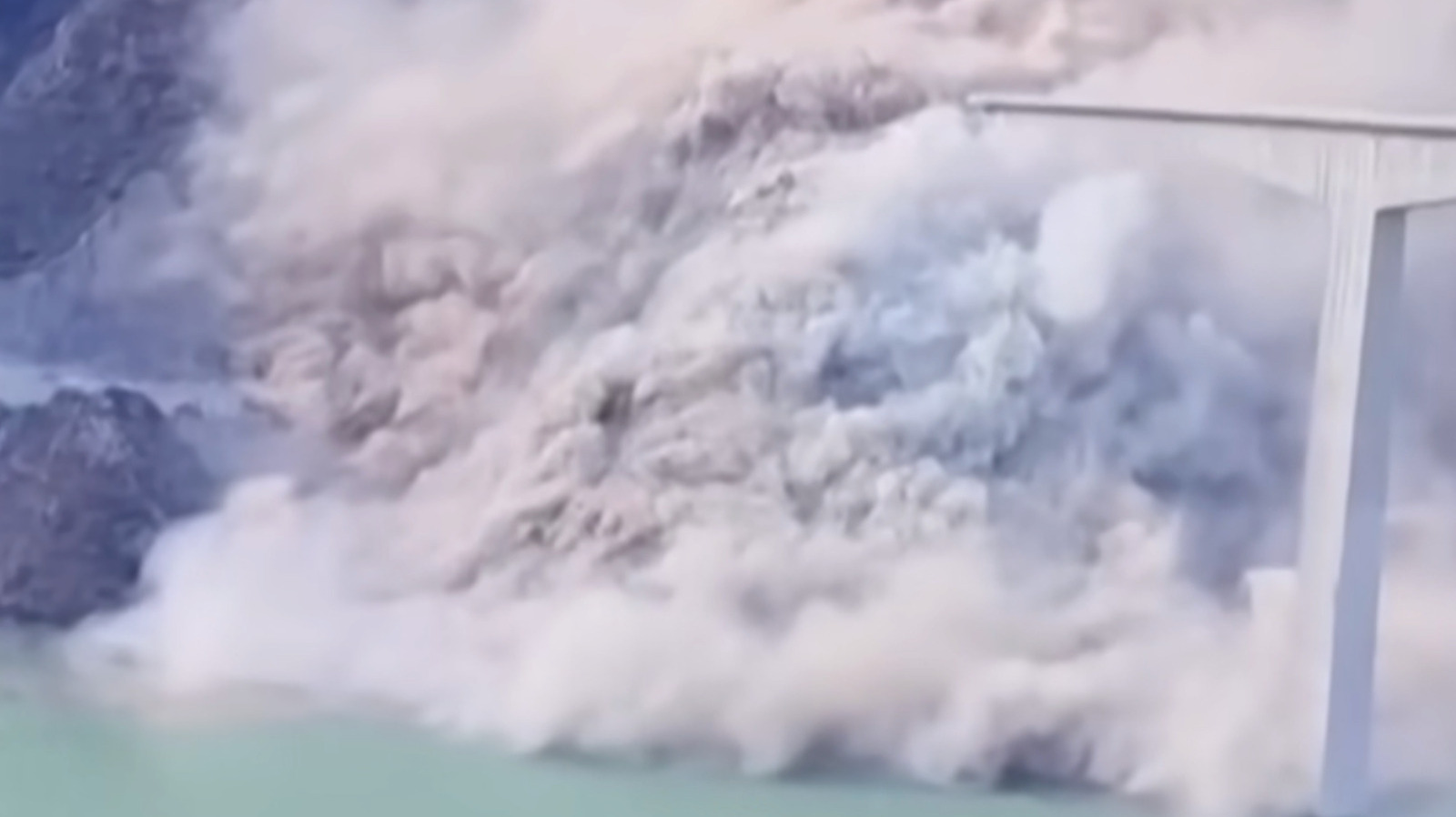UPDATE: A shocking bridge collapse in China has captured global attention, occurring just months after its inauguration. On November 11, 2025, the Shuangjiangkou Hongqi Bridge collapsed in a dramatic cloud of dust, raising urgent concerns about infrastructure safety in the region.
The bridge, a crucial structure linking Sichuan and Tibet, was thankfully empty at the time of the incident, as authorities had closed it just one day prior due to significant cracks observed in adjacent roads and slopes. The bridge, measuring a staggering 2,487 feet, fell in mere seconds, an event that could have been catastrophic had it been occupied.
Officials from the New York Times report that a detour is now in place, but the timeline for the bridge’s reopening remains uncertain. Local authorities attribute the collapse to a landslide that compromised the roadbed and approach ramp, a situation exacerbated by the area’s seismic activity. Notably, this region was devastated by a 7.9-magnitude earthquake in 2008, which claimed over 69,000 lives.
The Hongqi Bridge, constructed by the Sichuan Road & Bridge Group, was part of a $399 million project that took 19 months to complete. Designed to withstand an 8.0 earthquake, its cable-stayed structure was touted as an engineering marvel. However, the rapid construction pace has raised flags among experts, with some questioning whether it contributed to the collapse.
In the days leading up to the disaster, the local government held an opening ceremony for the Shuangjiangkou Dam, the world’s tallest hydroelectric power dam. While there is currently no evidence linking the dam to the bridge failure, the timing has led to speculation regarding potential influences.
The incident echoes previous high-profile bridge collapses, including the Francis Scott Key Bridge in Baltimore in 2024, where a cargo ship collision resulted in six fatalities, and the Morandi Bridge in Genoa, Italy, which collapsed in 2018, resulting in 43 deaths. These events highlight ongoing concerns about infrastructure integrity in seismically active regions.
As investigations continue, authorities are under pressure to provide answers and ensure safety standards are met. The immediate implications of this collapse are profound, impacting transportation and raising serious questions about the future of construction practices in vulnerable areas.
This developing story remains urgent as more details emerge. Stay tuned for updates on recovery efforts and safety measures in the aftermath of this alarming incident.







